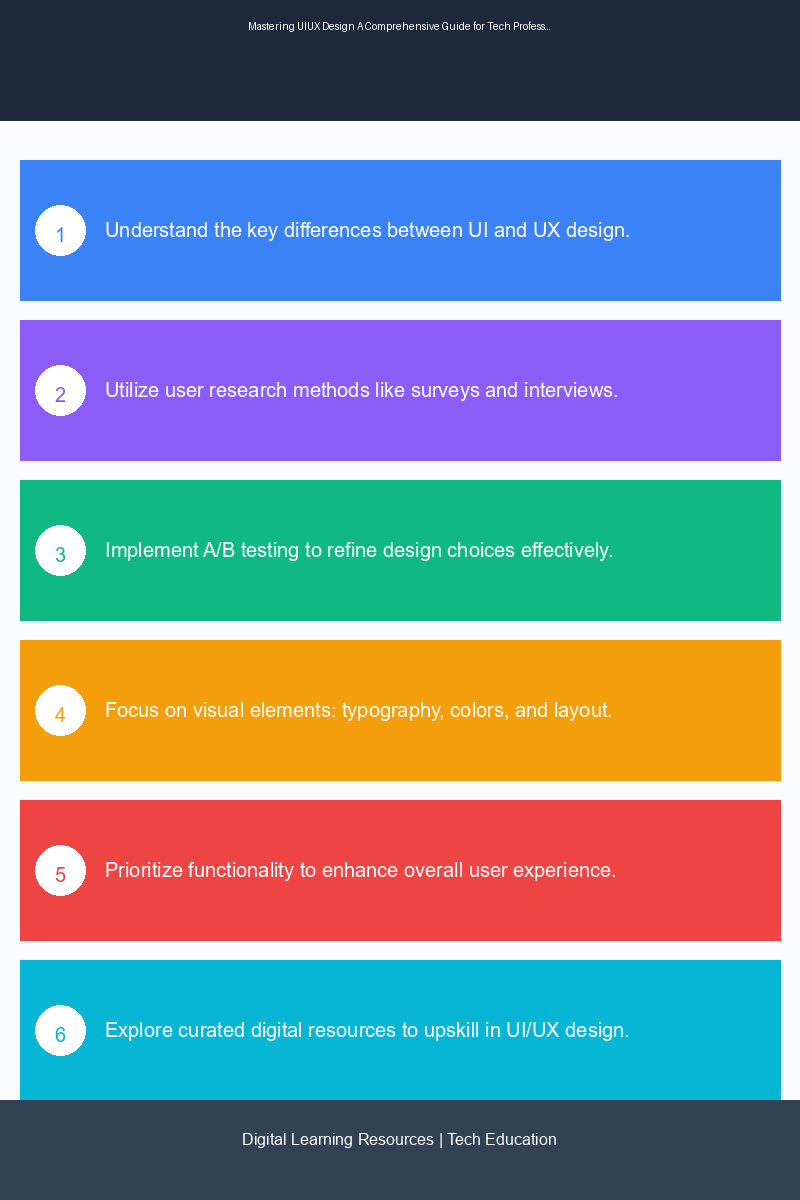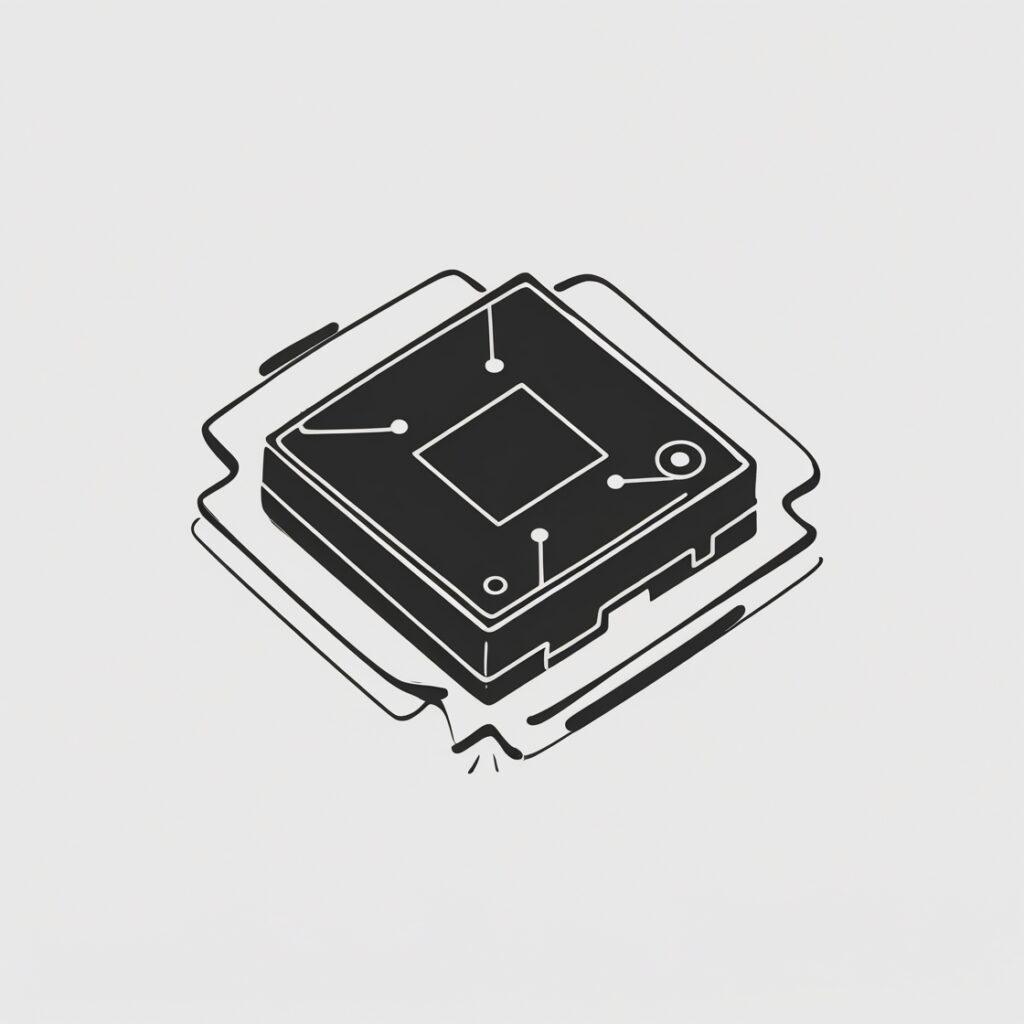Key Takeaways: Understanding the distinctions between UI and UX design is crucial for creating effective digital products. This guide explores essential concepts, practical applications, and learning paths that can significantly enhance your career development in the tech industry.
Introduction
The digital landscape is ever-evolving, and the demand for skilled UI/UX designers continues to grow. As a tech professional, understanding the nuances of User Interface (UI) and User Experience (UX) design can set you apart in a competitive job market. This comprehensive guide will delve into the technical concepts and methods that underpin effective UI/UX design, provide actionable advice on practical applications, and outline learning paths to advance your skills.
Technical Background and Context
UI design focuses on the visual elements of a product, including typography, colors, buttons, and layout. In contrast, UX design ensures that the product is functional and easy to use. Both UI and UX complement each other to create a seamless experience for users. Effective design begins with understanding the user, and various user research methods—such as surveys, interviews, heatmaps, and A/B testing—play a vital role in this process.
📚 Recommended Digital Learning Resources
Take your skills to the next level with these curated digital products:
AI Enhanced Resume Builder
AI Resume Builder Flask App – Complete Source Code + PDF Tutorial + HTML | Digital Download for Designers
AWS Solutions Architect Associate SAA-C03 Complete Study Guide & Practice Exam Bundle
AWS Solutions Architect Associate SAA-C03 Complete Study Guide & Practice Exam Bundle
📊 Key Learning Points Infographic

Visual summary of key concepts and actionable insights
Learn AWS: Your First Cloud Application
Learn AWS: Your First Cloud Application
Comprehensive SAT Prep: 470+ Vocabulary Words
Comprehensive SAT Prep: 470+ Vocabulary Words
JavaScript for Web Development eBook | Learn to Build Interactive Websites
JavaScript for Web Development eBook | Learn to Build Interactive Websites
Wireframes serve as blueprints for webpages or app layouts, mapping the content structure and user flow. Understanding the distinction between wireframes, mockups, and prototypes is essential for any designer. While wireframes provide a basic layout, mockups offer a more detailed visual representation, and prototypes allow for interactive testing of the design.
Accessibility principles are increasingly essential in UI/UX design, ensuring that digital products cater to users with disabilities. Key practices include using readable fonts, providing alt text for images, ensuring keyboard navigability, and maintaining adequate color contrast. Additionally, heuristic principles in UX design guide usability evaluations, helping designers create products that meet user needs effectively.
Practical Applications and Use Cases
Understanding the technical aspects of UI/UX design is fundamental, but how can these concepts be applied in real-world scenarios? Here are a few use cases:
- Redesigning an E-commerce Site: By conducting user research through surveys and A/B testing, you can identify pain points in the current design. Wireframes can then be developed to outline a new layout that improves user flow and enhances the shopping experience.
- Developing a Mobile App: Use prototyping tools like Figma or Adobe XD to create interactive mockups of your app. User testing can provide valuable feedback, allowing for iterations before the final release.
- Improving Accessibility: Evaluate existing designs for accessibility compliance. Implement changes such as high-contrast color schemes and keyboard navigation to ensure that products are usable for all individuals.
Learning Path Recommendations
For aspiring designers, understanding the differences between UI and UX design is essential. Here’s a recommended learning path:
- Foundational Courses: Start with online courses that cover the basics of UI/UX design. Platforms like Coursera, Udemy, or LinkedIn Learning offer comprehensive materials.
- User Research Techniques: Learn about various user research methods and their importance in aligning designs with user needs. Practical workshops or webinars can enhance your understanding.
- Hands-on Projects: Engage in projects that require you to create wireframes, mockups, and prototypes. Platforms like Behance can be used to showcase your work.
- Certifications: Consider pursuing certifications in UX design from recognized organizations, such as the Nielsen Norman Group or Interaction Design Foundation.
Industry Impact and Career Implications
The emphasis on accessibility in UI/UX design is growing. Companies are increasingly recognizing the need to cater to users with disabilities, making accessibility knowledge a valuable asset for designers. Additionally, there is a rising demand for designers who can integrate user psychology into their design processes, enhancing user engagement and satisfaction.
As a UI/UX designer, you have the potential to work in diverse industries, from tech startups to large corporations. Understanding the latest trends and best practices will not only enhance your skill set but also make you a more appealing candidate for potential employers.
Implementation Tips and Best Practices
The following tips can help you implement effective UI/UX design strategies:
- Conduct Regular User Testing: Incorporate user feedback at every stage of the design process. This iterative approach can lead to significant improvements in usability.
- Stay Updated on Industry Trends: Follow industry blogs, attend webinars, and participate in design communities to stay informed about the latest developments in UI/UX.
- Utilize Design Tools: Familiarize yourself with popular design tools like Figma, Sketch, and Adobe XD. Each tool has unique features that can enhance your workflow.
- Collaborate with Developers: Work closely with developers to ensure the feasibility of your designs. Clear communication can help bridge the gap between design and implementation.
Future Trends and Skill Requirements
As technology continues to evolve, several trends are shaping the future of UI/UX design:
- AI and Machine Learning: These technologies are beginning to influence design processes, creating personalized experiences for users.
- Voice User Interfaces (VUIs): With the rise of smart assistants, understanding how to design for voice interactions is becoming increasingly important.
- Emphasis on Emotional Design: Designers are encouraged to create emotionally engaging experiences that resonate with users on a personal level.
To stay relevant, aspiring UI/UX designers should focus on developing skills in user research, wireframing, prototyping, usability testing, and interaction design. Problem-solving abilities and a solid understanding of user psychology will also be valuable assets in your toolkit.
Conclusion with Actionable Next Steps
Mastering UI/UX design is a rewarding journey that can significantly impact your career in tech. Start by solidifying your understanding of the core concepts and methodologies discussed in this guide. Engage in user research, create wireframes, and develop prototypes to apply your knowledge practically.
As you continue your journey, consider pursuing certifications and participating in design communities to expand your network. Stay informed about industry trends and best practices to ensure that your skills remain relevant in this fast-paced field. By investing in your education and practical experience, you can position yourself as a valuable asset in the world of UI/UX design.
Disclaimer: The information in this article has been gathered from various reputed sources in the public domain. While we strive for accuracy, readers are advised to verify information independently and consult with professionals for specific technical implementations.
Ready to advance your tech career? Explore our digital learning resources including programming guides, certification prep materials, and productivity tools designed by industry experts.



